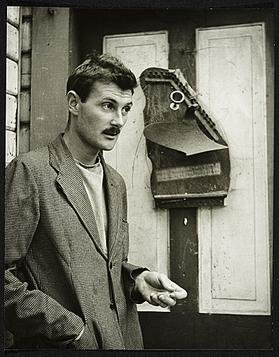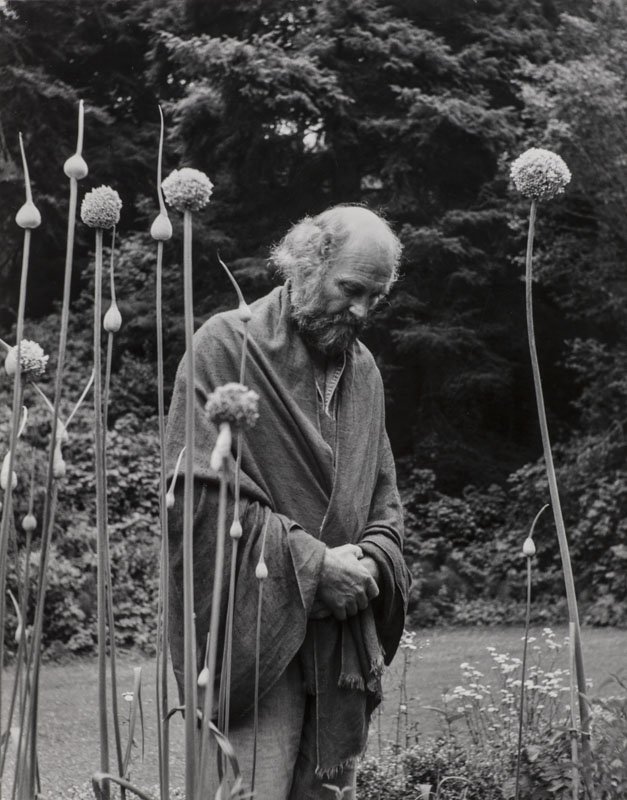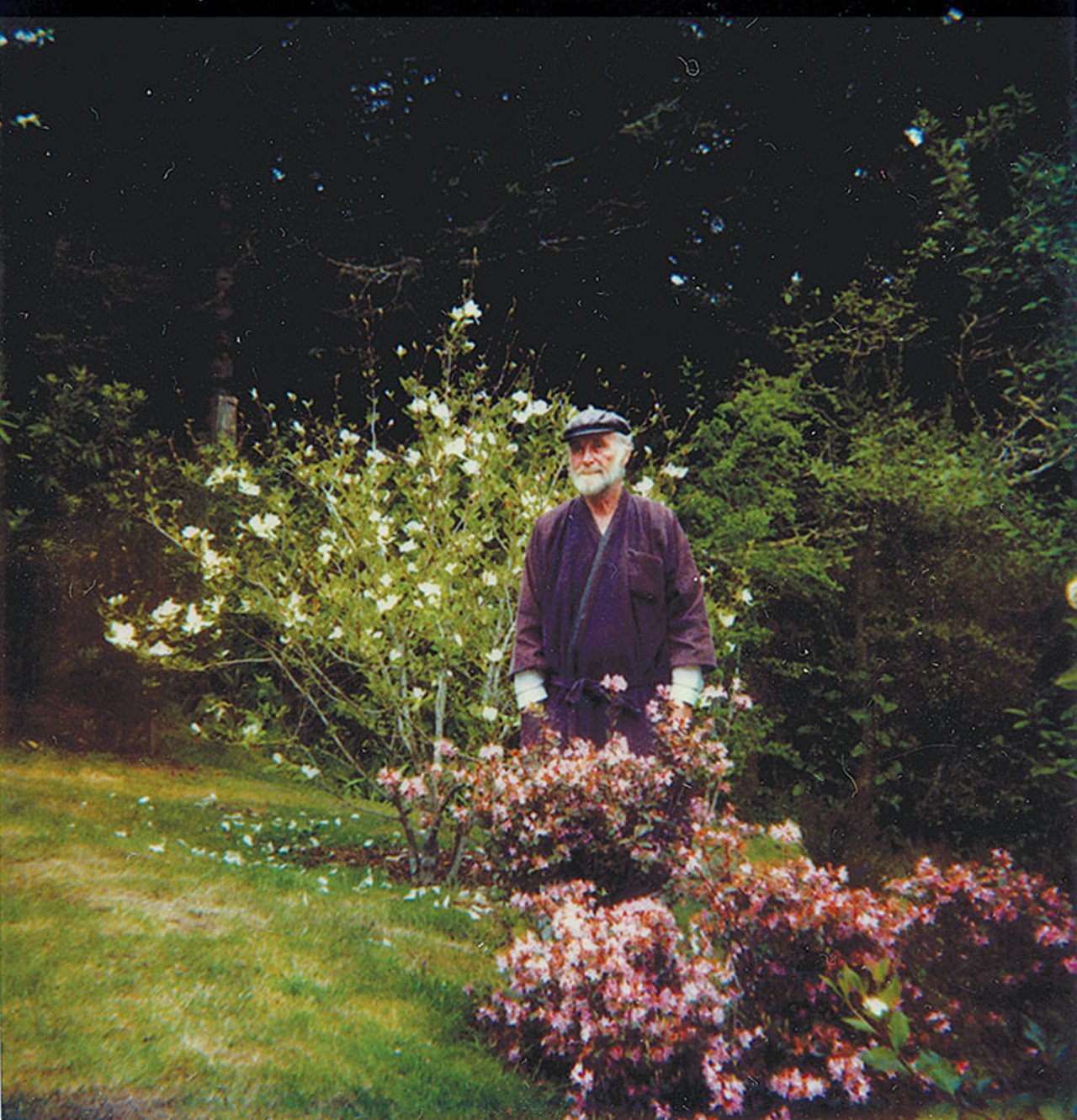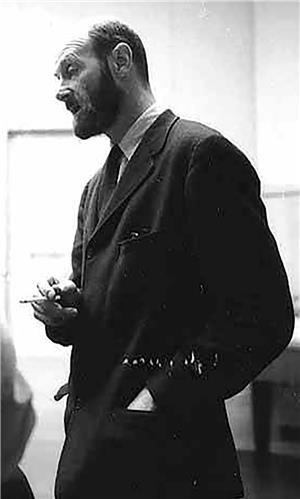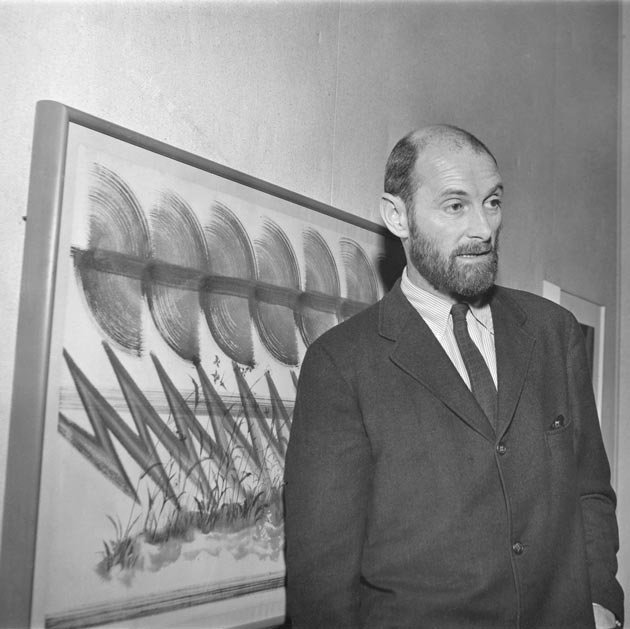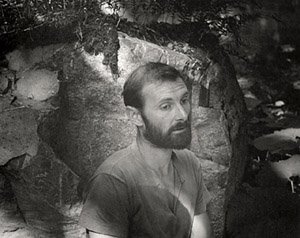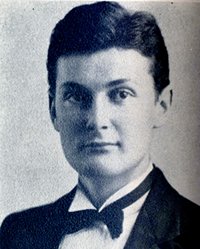About Morris Graves
From a very young age Graves was fascinated by flowers, which would eventually become an important motif in his work. After finishing his sophomore year of high school, Graves dropped out to sail on American Mail Line ships, visiting Japan, China and the Philippines. It was during these years that Graves first became interested in philosophy, Asian aesthetics, eastern religions and the cultural practice of integrating one’s life with beauty. Upon returning to the USA in 1928, Graves avoided returning home where he feared he would be an additional drain on the family resources, already burdened by the arrival Great Depression. Instead Graves traveled the country, eventually stopping in Beaumont, Texas, where he lived with his aunt and uncle until 1932 when he graduated from high school at the age of 20.
2010 marked the 100th anniversary of the birth of one of the Northwest’s best-known artists, Morris Cole Graves. In a baby book, Graves’ mother recorded his first word as “see.” In looking at a life of work it seems that this is what he has asked himself and us as viewers to do all along- to see, to look beyond the surface of the objects and catch sight of their inner nature.
Shortly before Morris’ birth, his father uprooted the family from Seattle, Washington and moved them to Oregon to claim land under the Homestead Act. Graves was born on August 28th, 1910 in Fox Valley, Oregon. Morris was the sixth of eight children. However, due to the area’s relentless winds, and bitter winters, survival was a daily battle for the Graves family, and shortly after Morris’ birth the family moved back to Seattle. Due to an early bout of pneumonia during his first year of life, Graves grew up a sickly child, and kept close to home, amusing himself with the garden instead of playing with his many siblings.
Upon his graduation, Graves moved back to the Pacific Northwest, where his talent was recognized almost immediately with a first prize win at the Northwest Annual Exhibition in 1933. Graves was a budding artistic genius, with a natural eye for light and color, a unique talent for drawing animals, especially birds, and capturing his subjects’ inner beings along with their physical forms. In 1936 Graves had his first one-person exhibition at the Seattle Art Museum. In 1941 the name Morris Graves came to the attention of the larger art world when the then little-known Seattle artist was featured in an exhibition at New York’s Museum of Modern Art. The museum purchased eleven of Graves’ paintings, and many more were purchases by collectors. In 1942 Graves was invited to participate in The Whitney Museum of American Art’s Annual Exhibition. Graves went on to exhibit in each of the Whitney’s annuals from 1942 to 1967.
Graves had officially made it as a nationally acclaimed artist. In September of 1954 Graves' artistic career received another boon when he, along with Guy Anderson, Kenneth Callahan and Mark Tobey, were mentioned in a Life Magazine article on Northwestern artists. That same year Graves abandoned Seattle for Ireland, living outside Dublin, he spent the days sketching local plants and animals. In 1964, after some extensive traveling, Graves returned once more to the United States, this time to remote Humboldt County, California, where he bought a property surrounded by virgin redwoods, far from the bustling cities, he called his property “The Lake.” After moving to California, Graves’ style changed, his colors brightened, his paintings of flowers seemed to radiate life from their richly-hued petals. His later works went further and further into abstraction, and the Asian influence of his early pieces was gone, but the delicate quality so characteristic of Graves’ paintings throughout his career remained. In 1996, the Humboldt Arts Council started raising money to turn the old Carnegie Library in Eureka into an art museum, they offered to name the new museum after Graves. Graves accepted, and donated over 100 works from his own personal collection to what is now the Morris Graves Museum of Art. The Morris Graves Museum of Art officially opened its door to the public on January 1st, 2000. The work of Morris Graves, quietly thrilling both visually and emotionally, has lived on past its maker, providing their audience with glimpses into a world of natural harmony and ethereal beauty. Graves spent the remainder of his days at “the Lake” painting until his death on May 5, 2001.
Further Reading:
“The Great Blue Heron and The Great Rainbow Trout Yogi in Phenomenal Space, Mental Space and The Space of Consciousness” -1979




